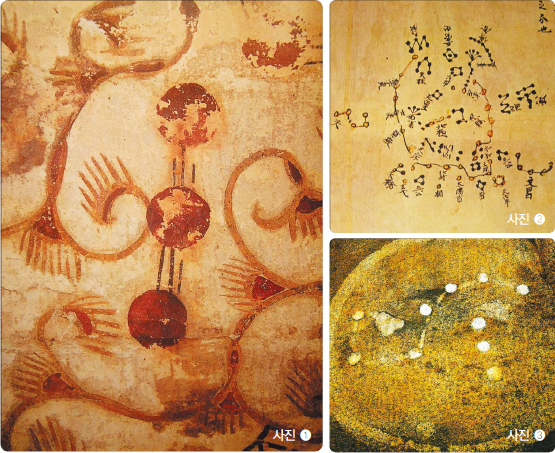NORTHEAST ASIAN HISTORY FOUNDATION 01/2015
the Cover
If the formation and evolution of stars are the subjects of modern astronomy, the pattern of stars in a constellation and its changes are in the realm of archeoastronomy. Many historic relics and sites have pictures of constellations, whose shapes are apparently different between the East and the West, and between China and Koguryo. They were the same stars against the same sky, but portrayed differently from country to country because constellations reflect a collective culture. The most marked difference between countries is found in the portrayals of Polaris, because ancient people, having observed that celestial bodies revolved around it once a day, treated it as the master of the night sky. For instance, Polaris is portrayed as five stars in the Dunhuang Star Chart from the period of the Tang Dynasty of China, but as three stars in the mural painting of Koguryo that was drawn at a time before the Dunhuang Star Chart.
 Photo 1 Polaris as three stars on the ceiling of the North Wall of Koguryo's Tomb with
Photo 1 Polaris as three stars on the ceiling of the North Wall of Koguryo's Tomb witha Mural Depicting a Traditional Wrestling Match (circa 5th century)
Photo 2 Polaris as five stars on the Dunhung Star Chart of China (circa 8th century)
Photo 3 A portrayal of the Big Dipper, and Polaris as three stars,
in the Goryeo Mural Tomb in Seogongni, Paju, Gyeonggi Province


